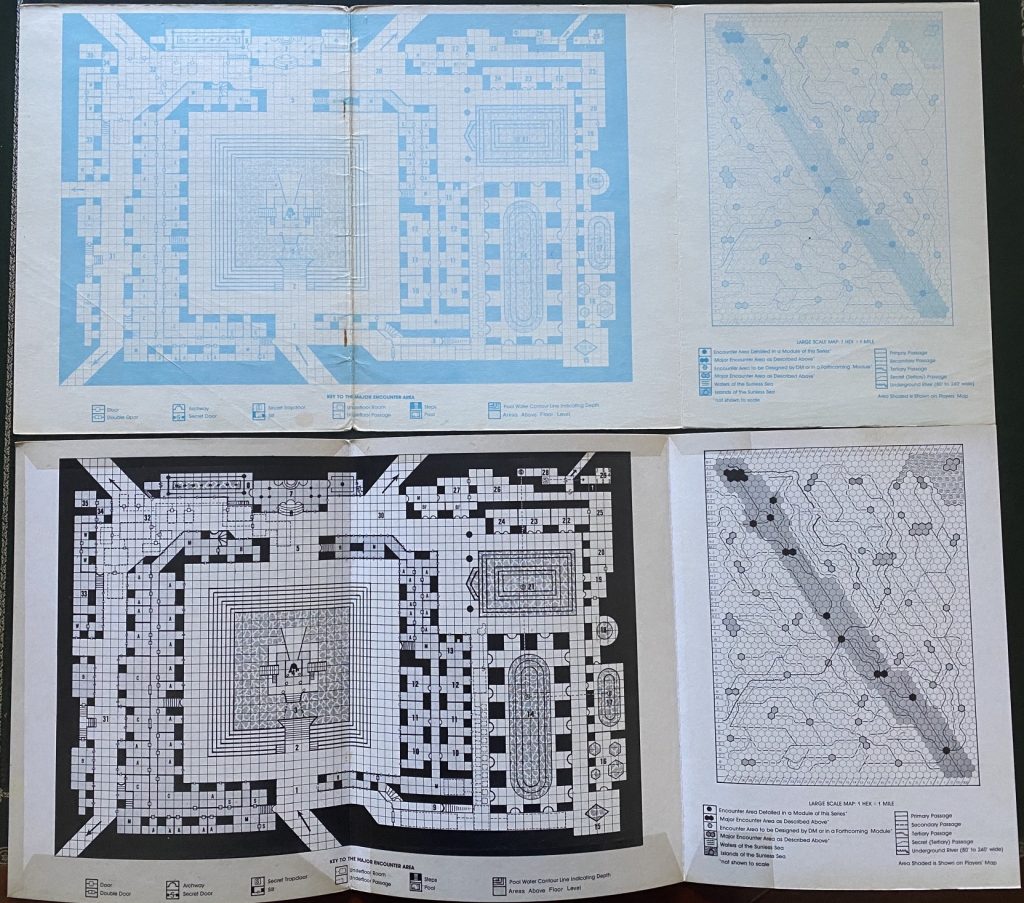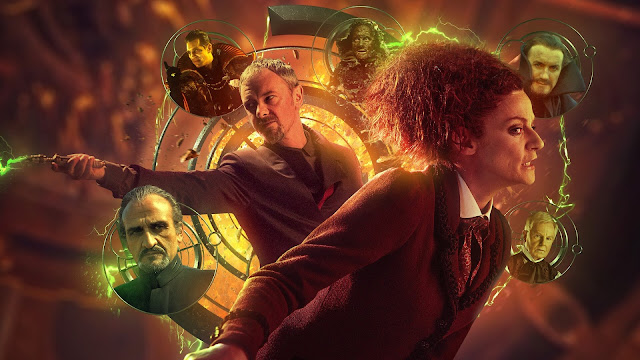1974 is an important year for the gaming hobby. It is the year that
Dungeons & Dragons was introduced, the original RPG from which all other RPGs would ultimately be derived and the original RPG from which so many computer games would draw for their inspiration. It is fitting that the current owner of the game,
Wizards of the Coast, released the new version,
Dungeons & Dragons, Fifth Edition, in the year of the game’s fortieth anniversary. To celebrate this, Reviews from R’lyeh will be running a series of reviews from the hobby’s anniversary years, thus there will be reviews from 1974, from 1984, from 1994, and from 2004—the thirtieth, twentieth, and tenth anniversaries of the titles. These will be retrospectives, in each case an opportunity to re-appraise interesting titles and true classics decades on from the year of their original release.
—oOo—
 James Bond 007: Role-Playing In Her Majesty’s Secret Service
James Bond 007: Role-Playing In Her Majesty’s Secret Service was published in 1983 by Victory Games, a subsidiary of Avalon Hill. It was not the first espionage roleplaying game. That honour goes to
Top Secret: An Espionage Role Playing Game for 3 ormore players, ages 12 to adult, published by TSR, Inc., and whilst
Espionage! from Hero Games and
Mercenaries, Spies and Private Eyes from Blade, a division of Flying Buffalo, Inc., were both published in 1983, it was the
James Bond 007 roleplaying game which not only took the crown, it remained the preeminent espionage roleplaying game, arguably never to be equalled. After all, what it had was brand recognition and few of the espionage and spy roleplaying games which came after
James Bond 007—and certainly none of those that came before it, were not influenced by the films adapted from Ian Fleming’s novels. The
James Bond 007 roleplaying game took that brand recognition and offered the players the opportunity to roleplay in the setting of the world’s greatest spy, to travel the world and visit its greatest cities, enjoy the most luxurious food, play at the best gaming tables, seduce the most attractive women, use the most amazing gadgets, thwart the diabolical plans of evil masterminds, and so save the world, and of course, seduce the attractive women again. All whilst looking suave.
James Bond 007: Role-Playing In Her Majesty’s Secret Service is based upon the James Bond films and the original James Bond novels, but drew more from the former than the latter. This would have consequences for the roleplaying in terms of background. The rules—primarily percentile based—covered every type of action seen in the films. Action, combat, chases, gambling, seduction, thrilling cities, and gadgets are all there. Most of the major characters to have appeared on screen are also included with full stats, Bond himself receiving a chapter of his own. The one element missing from the roleplaying game and the one that everyone expected to be there, is SPECTRE and its leader, Ernst Stavro Blofeld. At the time of
James Bond 007’s publication, the rights to them were contested and so they could not be included. Instead, the roleplaying game provided a similar organization called T.A.R.O.T. or ‘Technological Accession, Revenge, and Organised Terrorism’, complete with a range of NPCs, including its leader, the evilly named Karl Ferenc Skorpios. Although disappointing, the absence of both SPECTRE and Ernst Stavro Blofeld actually frees up the Game Master to create her own missions, free of the associated backstory between Bond and Blofield and obviously designed around the Tarot card theme of T.A.R.O.T., and Karl Ferenc Skorpios and his minions can become the nemesis for the Player Characters in ways that SPECTRE and Ernst Stavro Blofeld never quite will.
James Bond 007: Role-Playing In Her Majesty’s Secret Service opens with a bold statement: “The James Bond 007 Game in [sic] not like most role playing games available today. Those games are designed to make the GM all-powerful and give the NPCs a much greater advantage over the Player Characters.” It expands on this by saying that NPCs in fantasy games are often incredibly powerful because of their armies or magical artefacts, and that in Science Fiction settings, the universe is so big that the Player Characters have little influence on any course of events, before explaining why
James Bond 007 is different. It gives Player Character agency, the ability and authority to act and so succeed rather than fail, to fulfil a mission and save the world rather than fail and let some criminal mastermind’s plans come to fruition. There is both truth and hyperbole in this statement, but J
James Bond 007 does place the Player Characters at the centre of the story and the action. It also gives both them and their players the means to succeed. The Player Characters are skilled spies and they are often equipped with gadgets devised by ‘Q’ which give them an advantage. For the players,
James Bond 007 provides them with a magnificent gift—Hero Points. Arguably the roleplaying game’s greatest innovation, in play they are used to alter the effect of skill rolls and to shrug off wounds and even death, and so allow the Player Characters to be more heroic. Although a Player Character will not necessarily succeed on every action—and why should he, otherwise how else is he going to be captured and have the opportunity to listen to the villain’s monologue?—he has the means to succeed where it counts. The rest of course, is down to player decisions and roleplaying, although it is interesting to note that although the players are encouraged to roleplay like Bond, when it comes to the published scenarios, most of which were directly based on the films, they are advised not to roleplay like Bond, or at least not follow the exact same actions as he did in the films. This is because although a scenario like Goldfinger would follow the plot of its film, it had significant details changed to make it challenging and to ensure that the Player Characters would fail if they followed the exact same path of investigation and action as seen in the plot.
The introduction to the roleplaying game is excellent. Besides the provocative opening statement above, it explains the nature of roleplaying in James Bond’s world, the core concepts, terms, and rules of the game, and provides six example characters ready to play—James Bond, Anya Amasova, Felix Leiter, Holly Goodhead, Mary Goodnight, and Lieutenant Chong Sun Hip, all taken from the films. It also includes an exceptionally good example of play. In fact, it is arguably the best example of play in any roleplaying game. Six pages long, it takes two scenes from Goldfinger, first where Bond escapes the factory in the company of Tilly Masterton, but when she is killed by Oddjob, he gives himself up before attempting to flee again, using the ejector seat built into his Aston Martin DB5 by ‘Q’, and when captured again, his interrogation scene with Goldfinger. Parallel to the fiction is Game Master Jessica running the game for Dave, who is playing Bond. This is great writing, the parallels between the two working our imagination, showing how a roleplaying is played (and its highs and lows), and of course, the rules. Although the rules do not include another example of play like this, they do include numerous examples of the rules, all highly thematic and readable.
In
James Bond 007, the Player Characters are secret agents working for MI6, the British Secret Intelligence Service, and sometimes its allied agencies, such as the CIA or Japan’s Public Security Intelligence Agency. Depending upon their ability and assignments, they are ranked ‘00’, ‘Agent’, or ‘Rookie’. James Bond is of course, ‘00’ rank, as is Anya Amasova from
The Spy Who Loved Me, whilst Felix Leiter is ‘Agent’ rank and Mary Goodnight from
The Man with the Golden Gun is ‘Rookie’. Rank determines the number of points to be spent during character creation and to a certain extent the number of Player Characters in the game. Higher ranked characters are more capable and thus fewer of them are required to complete a mission.
A Player Character in
James Bond 007 has five characteristics, Strength, Dexterity, Willpower, Perception, and Intelligence. These range in value between five and fifteen. He also has numerous skills, such as Charisma, Driving, Evasion, Local Customs, Science, Seduction, and Sixth Sense. Notably, like the films, the roleplaying game does not include the use of languages (and similarly money). These are rated between one and fifteen. His height, weight, and appearance also matter, as the more notable a Player Character looks, the more Fame Points he will have, and the easier it is for him to be recognised. Derived values such as Speed, Hand-to-Hand Combat Damage Class, Stamina, and Running/Swimming Value are all primarily used in combat. All Player Characters have the Connoisseur, First Aid, and Photography, which are set values and work like skills, but optionally, a Player Character can also have Fields of Experience, which represent areas of knowledge and skill gained prior to becoming an agent for MI6, and also a weakness, for example, Board Games, Computers, Toxicology, and Rare Collectibles. Selecting one or more Fields of Experience increases a Player Character’s age, but grants him more points to spend on associated skills. To create a character, a player is given Generation Points to spend on the skills and attributes. The skill level is then added to the appropriate attribute to determine its Primary Chance. A Rookie receives 3000, an Agent 6000, and a ‘00’ 9000 points to spend. The process is a little complex and does take a bit of time.
Character Name: Claudia Romanov
Character Rank: Rookie
Age: 33 Fame Points: 76 Hero Points: 0
Appearance: Striking Height: 5’ 3” Weight: 125 lbs.
Strength 5 Dexterity 10 Willpower 7 Perception 8 Intelligence 7
Speed: 2 Stamina: 28 Running: 25 Carry: 60-100
Hand-to-Hand Combat Damage Class: A
Charisma (5) 12, Driving (4) 13, Fire Combat (3) 12, Gambling (5) 13, Hand-to-hand Combat (4) 9, Lockpicking and safecracking (7) 17, Mountaineering (4) 10, Seduction (2) 8, Sixth Sense (5) 12, Stealth (7) 11
Weakness: Greed
Abilities: Connoisseur, First Aid, Photography
Fields of Experience: Fine Arts, Jewellery, Law, Mechanical Engineering, Rare Collectibles, Snow Skiing
Mechanically,
James Bond 007 employs a percentile system. The Success Chance of an action is determined by multiplying the Primary Chance—typically that of a skill—by an Ease Factor, which ranges from ½ to ten. The harder the task, the lower the Ease Factor, and vice versa. A roll under the Success Chance succeeds, whereas a roll of one hundred always fails. For ease of play, a multiplication table is included on the character record sheet. In addition, the quality of a successful roll can matter. This is measured by the Quality Rating of the roll, which ranges from 1 to 4, or Acceptable, Good, Very Good, or Exceptionable. These various degrees of success determine how well the Player Character has done or how quickly, or in combat how damage is inflicted.
For example, Claude Romanova is attending the party held by the Russian oligarch, Samuil Vorobev, at his villa on the Côte d’Azur. She has already sneaked upstairs, into a bedroom, and then into his study. She quickly locates the safe and begins to crack it. The Game Master sets the Ease Factor at 3, as the safe is modern, meaning that with Claudia’s Lockpicking and safecracking Primary Chance of 17, her Success Chance is 51%. Claudia’s player rolls 18. This gives a Quality Rating of 3 or Good. This means that she has cracked the safe, purloined the jewellery that Samuil Vorobev’s girlfriend is not wearing that night and closed up before one of the oligarch’s security guards comes knocking at the door. Now to get back downstairs to the party…Combat and other action scenes in
James Bond 007 are played out in Action Rounds. Declarations of actions are made in reverse order of Speed—slowest first, and then enacted in order of Speed—fastest first. Combat handles hand-to-hand combat and gun combat in a decent fashion, with the Ease Factor used to modifier the Primary Chance if a specific location is being targeted. Chases are a special case though. Whether Boating, Diving, Driving, or Piloting, the participants in a chase bid against each, not up, down, lowering the Ease Factor and increasing the difficulty of the manoeuvre they want to perform. The manoeuvres include ‘Pursue/Flee’, ‘Force’, ‘Quick Turn’, ‘Double Back’, and ‘Trick’, the latter a catchall for all manner of stunts—jump a ditch, grab an opponent’s parachute mid fall, and so on. Failing a roll can lead to mishap as can driving below the Redline of a vehicle and exceeding its capabilities. The chase rules are clear and simple, handling the narrative of Bond-style chases in a tense fashion.
Other rules in
James Bond 007 cover interaction with NPCs—Persuasion, Seduction, and Interrogation, as well as gambling and gambling life. The latter includes a range of card games plus descriptions of casinos around the world. Fame handles the chances of the Player Characters being recognised by the wrong (or right) people, and then there are Hero Points. These enable a Player Character to alter the outcome of a skill roll, adjusting Quality Rating in his favour. So, he might lower the Quality Rating during a chase to ensure he pulls off a manoeuvre or raise the Quality Rating of an NPC’s attack roll to reduce the damage he would otherwise suffer. They are also used to perform a stunt or at the Game Master’s discretion, even affect the environment around the Player Character. The advice on handling Hero Points in this fashion is underwritten in comparison to their mechanical use, but the possibility is there to pull off some great stunts. For the Game Master, there are Survival Points, which she can spend on her important NPCs to do the same thing. In play, this can lead to great action scenes as the Player Characters and villainous NPCs attempt to outdo each and the Hero and Survival Points fly.
Having successfully raided the safe, Claudia is attempting to return downstairs to the party, but a security guard has come looking for her. As she exits into the hallway, bottle of champagne and glass in hand, slightly dishevelled after clambering over the balcony, she is confronted by the guard, asking what she is doing there. The Game Master sets the Ease Factor at 4, since the guard is suspicious and although out of place, she looks as if she is meant to be at the party, meaning that with Claudia’s Charisma primary Chance of 12, her Success Chance is 48%. Claudia’s player rolls 61. This is a failure, but Claudia’s player decides to spend a Hero Point to adjust the roll to Quality Rating of 4 or Acceptable. She has just about convinced the guard. …For now.It is important to note that
James Bond 007 was not actually the first to use a mechanic similar to its Hero Points. The earlier
Top Secret: An Espionage Role Playing Game for 3or more players, ages 12 to adult had included an optional rule for Fame and Fortune Points. However, they were only used to overcome a fatal wound and not affect game play in a wider fashion as in
James Bond 007. Essentially,
James Bond 007 takes the concept and refines them, making them intrinsic to both play and playing in the style of James Bond.
In terms of support,
James Bond 007 details and illustrates numerous weapons and vehicles, as well as detailing other pieces of equipment. These all feel just enough to get started, but really the Game Master is going to want to have a copy of the Q Manual: The Illustrated Guide to the World's Finest Armory, which along with equipment descriptions and illustrations includes an assessment of every item by ‘Q’. The book is brilliant read and consequently a great resource for any cinematic spy roleplaying game. For the Game Master there is solid advice on running the game and handling NPCs and personalising major villains; a description of MI6, its facilities and full write-ups and stats for its personal, including ‘M’, ‘Q’ (Major Boothroyd), Miss Moneypenny, and more; and of course, T.A.R.O.T. This is followed by similar stats and write-ups for James Bond’s allies and enemies, enabling the Game Master to have her players be helped or confronted by the signature characters from the films. Thrilling Cities describes some of the exotic locations that Bond and thus the Player Characters might visit—Hong Kong, London, Nassau, Paris, Rio de Janeiro, and Tokyo. Included in the descriptions are hotels, casinos, places to visit, restaurants, and so on, essentially location guides where encounters can be had in places of interest. Just as with the equipment section formed the basis for the Q Manual supplement, these city locations would form the basis for the supplement, Thrilling Locations.
Rounding out
James Bond 007 is the introductory adventure, ‘The Island of Dr. No.’ This is a solo adventure based on the film of the same name (though it would also receive a standard adventure that could be played with a group in 1984). It is intended to be played after the reader has read the introduction and understood the basics of the game. Consisting of just over a hundred entries, if used in this fashion, it does leave the player unprepared for any combat that might occur. Ideally the player should read that beforehand as well, or at least be prepared to refer to them in play. Otherwise, the scenario can be run by the Games Master and one player with relative ease. The scenario is decent and should help a player learn the rules, but it does leave the prospective Game Master needing a new scenario if she wants to run something for more players.
Physically, the
James Bond 007: Role-Playing In Her Majesty’s Secret Service core rulebook is done in black and white with tones of blue, which gives it a distinctive look all of its own. It does need an edit here and there, but what really stands out is the artwork. Unable to obtain the rights to stills from the films, the roleplaying game is illustrated throughout with black and white line art. Unfortunately, although inspired by the firms, the artwork does not always work. In general, the action pieces feel slightly off, but the character pieces and the portraits are actually really very good. Plus, the use of black and white line art actually gives the rulebook a consistent look and style whereas black and white stills from the various Bond films from the sixties, seventies, and eighties would have looked discordant.
Ultimately, the issues with
James Bond 007 as a roleplaying game are fourfold. First, there is the matter of the source material. To quote Judi Dench as ‘M’ in the 1995
Goldeneye, “I think you’re a sexist, misogynist dinosaur. A relic of the Cold War.” The social attitudes of both the novels and the films, then starring Roger Moore as Bond, are outdated, but reflected those of the time. Worse, Bond himself is seen to travel world, drinking, gambling, and seducing women, with the latter in particular, embodying the least attractive aspects of the character. Of course, the roleplaying has rules for seduction, but it has to in order to fit the genre. The Game Master advice for Seduction—as well as Persuasion and Interrogation (and Torture, though for NPCs only)—are they that are used as tools to gain information. To be fair, the inclusion of the Seduction mechanics cannot really be seen as the fault of the roleplaying game itself, and although attitudes have changed since the publication of
James Bond 007 in 1983, it would be difficult to write a roleplaying game based on the licence today without including them. However, the likelihood is that the advice for their use would be very different in a contemporary Bond roleplaying game. Just as the depiction of Bond has changed over the years so have roleplaying tastes.
Second, it is a fantasy. The stories of James Bond and thus
James Bond 007, do not reflect reality and certainly not the reality of espionage during the Cold War when the stories are set. Compared to the often-grubby world of spies, James Bond is an outlandish superhero, but in the public imagination, he is a spy and not only that, a superspy and his missions and adventures are exciting and thrilling.
James Bond 007 reflects this, just as the many other espionage roleplaying games do. Ron Edwards’
Spione: STORY NOW in Cold War Berlin is one of the very few spy-themed roleplaying games to actually eschew the over-the-top style of James Bond.
Third is the absence of SPECTRE and Ernst Stavro Blofeld. This is less of a problem than it first seems. After all, the Game Master is free to create both if she wants and the provided T.A.R.O.T., and Karl Ferenc Skorpios free her to create a wide range of themed missions. Fourth,
James Bond 007 is not a roleplaying game for multiple players. It simply does not work with the typical group of four, five, or six players in other roleplaying games, such as Dungeons & Dragons. There is rarely enough story for every Player Character to have time in the spotlight, plus, when it comes to the gadgets, not every Player Character is going to get to play with them. After all, who wants to sit in the back seat of the Aston Martin DB5?
James Bond 007 can of course be played with a single agent and the Game Master, but works equally well with two Player Characters or three. There are other minor issues.
James Bond 007 is chart heavy, so requires more page flipping than a Game Master might like. Then there is artwork which is used instead of stills from the films. Some of it is bad, but not all.
—oOo—
James Bond 007 was reviewed extensively at the time and since. It was first reviewed in
Space Gamer Number 67 (Jan/Feb 1984) by Aaron Allston. (Notably, the issue also included ‘Spy Vs. Spy Vs. Spy: a comparative review’ by W.G. Armintrout of
Espionage! and
Mercenaries, Spies and Private Eyes, the then newly released rivals to
James Bond 007.) The review was extensive, Aaron Allston was critical of elements of the game—the Hero Points gave the players too much power, the legal issues over the rights to Spectre and its associated characters, its Britishness, the art, the lack of references for the NPCs presented in the book, and its preponderance of charts. However, he liked the rest of the game and its innovations, saying that, “James Bond 007 does a good job of simulating the Bond milieu. It won’t make me give up Espionage, but I was intrigued by some of the game mechanics, impressed by the flow of play, and glad of the background detail involved. Bond aficionados looking for a decent game will find it here. Gamemasters for practically any contemporary RPG should look into the Q Manual. And the price isn’t bad. I give the game a qualified recommendation; it’s a valid effort, and generally does what it set out to do.”
James Bond 007 was reviewed not once, but twice in the pages of
Dragon Magazine. First in
Dragon Magazine #83 (March 1984) in ‘Good evening, Mr. Bond – The 007 role-playing system reviewed’ by Tracy Raye Hickman. He concluded, “As a game designer, the James Bond game made me sit up. I guess I’ll have to work a little harder. As a game player, I decided this game fills the bill. With a rule book that is easy to digest and use, the game system conveys all the sizzle of 007’s world. Don’t expect this game to be anything more than James Bond fantasy – but be assured that you.re getting nothing less.” It was then reviewed in
Dragon Magazine #137 (September 1988), in ‘Role-playing Reviews’ by Jim Bambra, who said in his evaluation that, “The JAMES BOND 007 game is a good, action-packed system that neatly captures the flavor of its subject. The need to refer to numerous tables during play tends to slow the action down, but the Hero Point system allows agents to perform just like 007 himself. To anyone looking for a game firmly based in the Bond mythos, the need to check tables proves to be a minor inconvenience, but for anyone looking for easy-to-use mechanics, the JAMES BOND 007 game is not an ideal choice.”
Nick Davison reviewed
James Bond 007 in
Imagine No. 11 (February 1984). He said, “Needless to say, I have some reservations about this game. The combat system takes a backward step, which is a pity: there is no hit location. Presumably the designers would argue that their simplistic approach was to speed up the game. True, but most role-players want interesting combat. Finally, this game is clearly unsuitable for a large group of players — imagine them packing into M’s office, packing into lifts and queueing up to seduce the villainess. Indeed, if there are too many, then villains will need platoons of infantry to overcome them. A necessary evil to improve play balance would be to separate them. However, this never works due to the extra complication for the GM.” Despite this, his review ended positively, “An excellent game for those primarily interested in role-playing rather than combat. It is not recommended for more than three players and is best with less.”
It was reviewed by Larry DiTillio in
Different Worlds Issue 34 (May/June 1984). He said, “Overall I give 007 the highest marks as a game. It is easy and fun to play, and it simulates the Bond films (not the books, as fans know there is a big difference) excellently. Players could even play Bond himself with ease, using the stats provided (of course the mission would have to be big). Most of all, the designers have instilled the flavor of Bond, the color, the dash, the improbable stunts, and the adventure we expect from the world of Bond. Moreover, since it works in a milieu that players can easily relate to, it is more vivid than most spy games on the market. Most of all, it is true to its subject, the designers state that it is not created to play hard-edged spy stories in the John Le Carre genre, it is Bond, plain and simple.”
Bob Neville reviewed
James Bond 007 in ‘Open Box’ in
White Dwarf Issue 57 (September 1984) and only gave it a rating of six out of ten. Despite this, he said, “As a complete system, the 007 game stands up quite well, with a real feeling of belonging to part of the Bond mythos being generated in play. There are faults, however, resulting from complexity of mechanics which can hinder play if adhered to. The rules also concentrate on the more modern pieces of equipment to the detriment of earlier Bond movies (which relied more on plot and action rather than gadgets) and a number of essential areas remain untouched or insufficiently developed. The game might not be the best spy role-game available, but is more complete and playable than any of its rivals.”
Retrospective reviews would follow in 1996. First in
Shadis Issue 27 (May 1996) by John Wick in the ‘Lost Treasures’ section of the Reviews department. He said, “A lot of people ask me why I run games without dice Well, it all started with the James Bond Role-Playing Game. You see I was dating this girl when I was living back in St. Paul who was also a gamer and a Mission Impossible/Avengers fan (they used to run them back to back on Channel 11 on Saturday afternoon). So, when I saw the JBRPG, I had to pick it up. We spent many a long, cold evening in front of a fire—with me as the GM and her as the Agent. Sheila and me, we didn’t need any dice. So when gamer couples came into the store (yes, they do exist!), I’d always refer them to the James Bond RPG. The system was simple: it was great for beginners and those of us who prefer storytelling over statistics. 0f course, as the engineers in the office remind me, it’s the guys who know statistics that make it easy to play. The sourcebooks were also a lot of fun (although not accurate). The Q Manual was packed with gadgets and submarine cars, wristwatches with laser cutters and iron teeth.” … “So if you sit around on Saturday afternoons watching old reruns of Mission: Impossible, The Avengers, Secret Agent and The Saint, then you must go out to your local con and start digging through those used game boxes. I picked mine up for $5.”
The second retrospective review appeared in
Arcane Issue Nine (August 1996). In the regular ‘Retro’ department James Swallows described the roleplaying game consisting of, “Larger than life characters, loose, almost non-existent plots, fantastic gadgets, fast cars, beautiful women, lots of shooting and explosions, megalomaniac villains and ludicrous names – all set in exotic locations in a glamorous version of our own drab world.” His review was positive, concluding that, “The James Bond 007 roleplaying game had exactly the same sort of instantly playable background that, say, Star Wars does. It had ‘M’, ‘Q’, Moneypenny, Oddjob, Jaws, Goldfinger, and Scaramanga. It even had the infamous Pussy Galore! What more need be said?” It was followed in
Arcane Issue Fourteen (December 1996) by its inclusion in ‘The 50 favourite RPGs of all time’ based on a reader’s poll at position #46. Arcane’s editor Paul Pettengale commented: “Because of the subject matter, and because the rules are easy to get to grips with, this proved to be an instant hit. It has also been backed up with a couple of cracking supplements – Thrilling Locations and the Q Manual – which makes creating all manner of interesting scenarios an absolute breeze.”—oOo—
James Bond 007: Role-Playing In Her Majesty’s Secret Service would go on to win the H.G. Wells Award for ‘Best Roleplaying Rules of 1983’ at the 1984 Origins and at the 1984 Strategists’ Club Awards, it won ‘Outstanding Role-Playing Game of 1983’. It is not difficult to see why. Long out of print—although a retroclone of the rules shorn of the licence,
Classified, is available—
James Bond 007 is still the best emulation of James Bond stories seen on screen. The mechanics are at their core simple and elegant, and its various subsystems—gambling, chases, seduction—do all really work together to emulate the source material in a fashion that can only be described as pitch perfect and peerlessly playable. Add on top of that, the innovation of Hero Points that enable the Player Characters to get into the story and action of Bond in a fashion that had never before been seen in any roleplaying game, and what you have in
James Bond 007: Role-Playing In Her Majesty’s Secret Service is an impeccable roleplaying game, the first great licensed roleplaying, the like of which would not be equalled, let alone bettered for decades.
 Chariot Race is a ‘Roll & Race’ board game. Now lots of board games are races, involving the rolling of dice to move. For example, Snakes & Ladders and Ludo are both children’s classics, both involving races, but Chariot Race is a modern board game and uses its dice rolls to create different effects and determine what a player can do from turn to turn, much like the earlier King of Tokyo. In the game, the players are charioteers, standing in their chariots, reins and whip in hand, javelins and caltrops to one side, ready to race, to the sound of the roaring crowd of the colosseum. To win, a player must be first across the line after completing two laps of the arena. Unfortunately, his rivals will not only do their best to outrace him, but they will also do their best to stop him—dropping caltrops into his path if he is behind, throwing javelins at him if close enough, and even ramming him! The result is a fantastic spectacle for the crowds and glory for the winner who can survive long enough to cross the finishing line. All this will be done according to the rolls of the dice—can a player slow his chariot down enough to get round a corner without risking damage or speed up to catch his competitors? Can he change lane to avoid an obstacle, a rival charioteer and his chariot, or caltrops thrown in his path? Can he attack a competitor? Can he gain the Favour of Fortuna and make repairs to his damaged chariot or alter the results of the other dice? Only the bravest of the brave and luckiest of the lucky charioteer will be able to find out in Chariot Race.
Chariot Race is a ‘Roll & Race’ board game. Now lots of board games are races, involving the rolling of dice to move. For example, Snakes & Ladders and Ludo are both children’s classics, both involving races, but Chariot Race is a modern board game and uses its dice rolls to create different effects and determine what a player can do from turn to turn, much like the earlier King of Tokyo. In the game, the players are charioteers, standing in their chariots, reins and whip in hand, javelins and caltrops to one side, ready to race, to the sound of the roaring crowd of the colosseum. To win, a player must be first across the line after completing two laps of the arena. Unfortunately, his rivals will not only do their best to outrace him, but they will also do their best to stop him—dropping caltrops into his path if he is behind, throwing javelins at him if close enough, and even ramming him! The result is a fantastic spectacle for the crowds and glory for the winner who can survive long enough to cross the finishing line. All this will be done according to the rolls of the dice—can a player slow his chariot down enough to get round a corner without risking damage or speed up to catch his competitors? Can he change lane to avoid an obstacle, a rival charioteer and his chariot, or caltrops thrown in his path? Can he attack a competitor? Can he gain the Favour of Fortuna and make repairs to his damaged chariot or alter the results of the other dice? Only the bravest of the brave and luckiest of the lucky charioteer will be able to find out in Chariot Race.
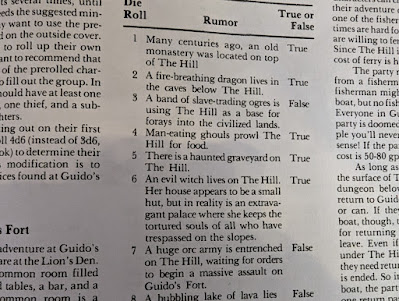

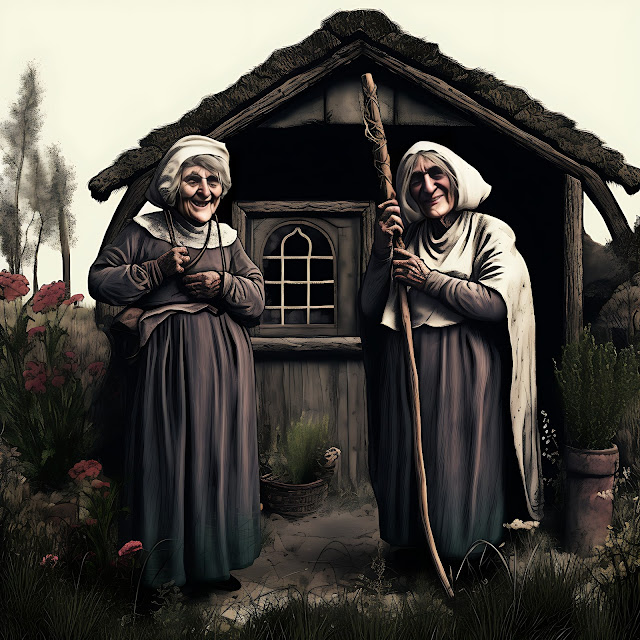













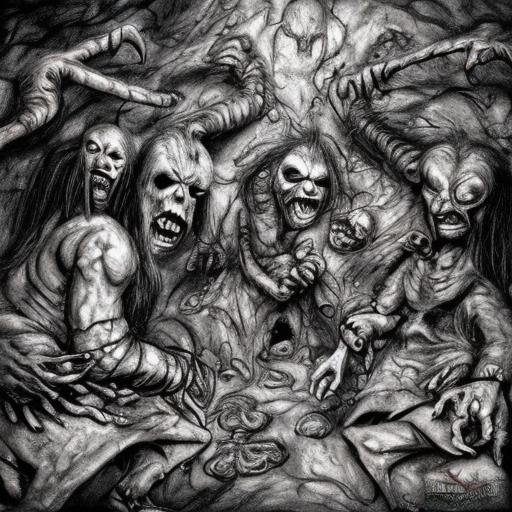
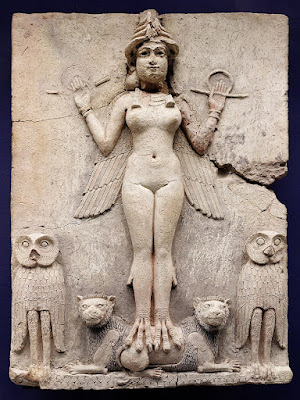











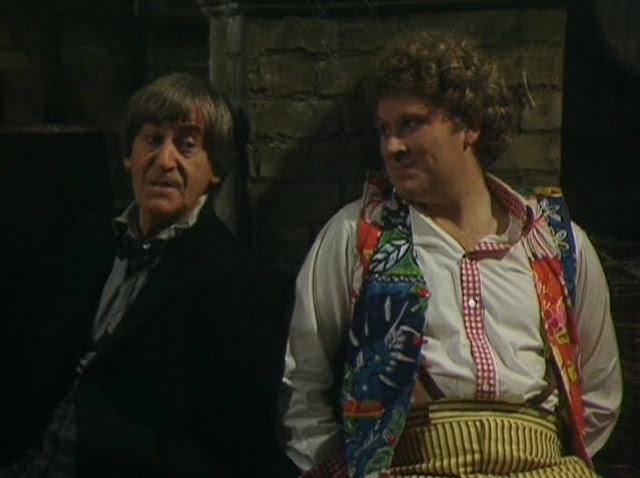
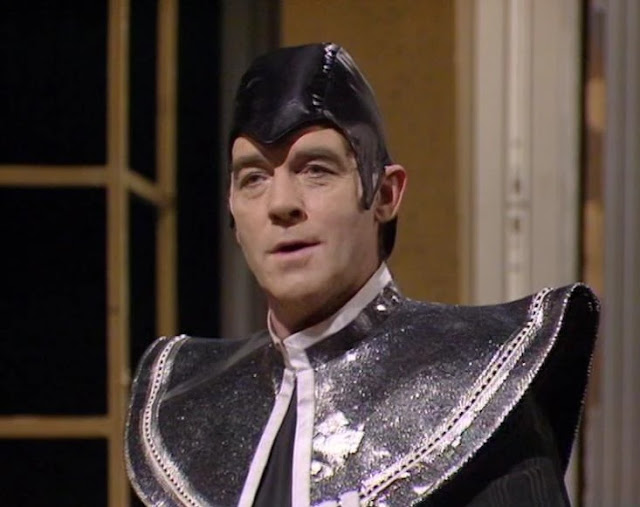

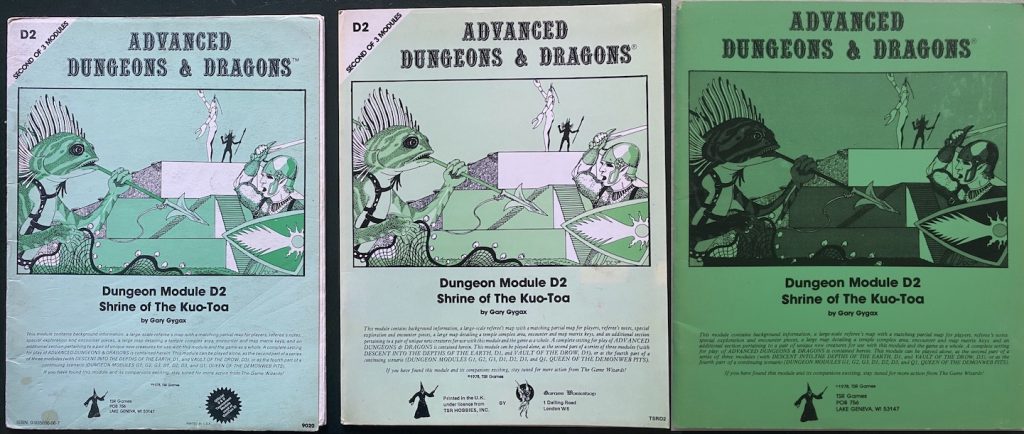 What’s New
What’s New
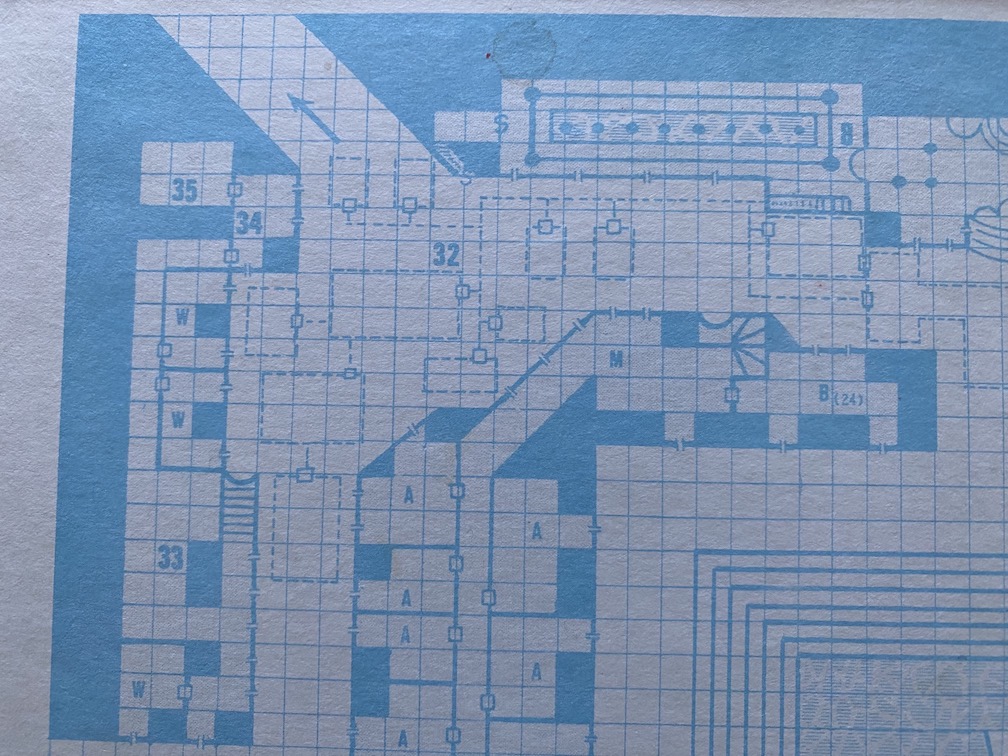 Art
Art
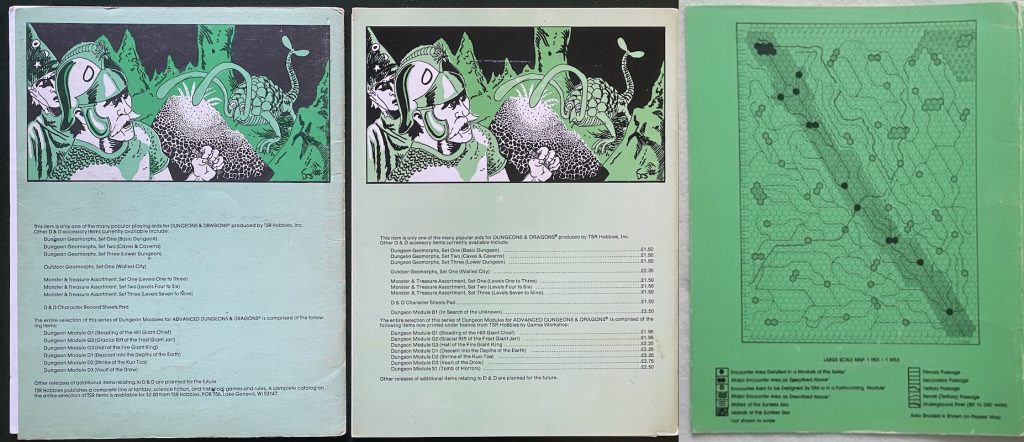 General
General
